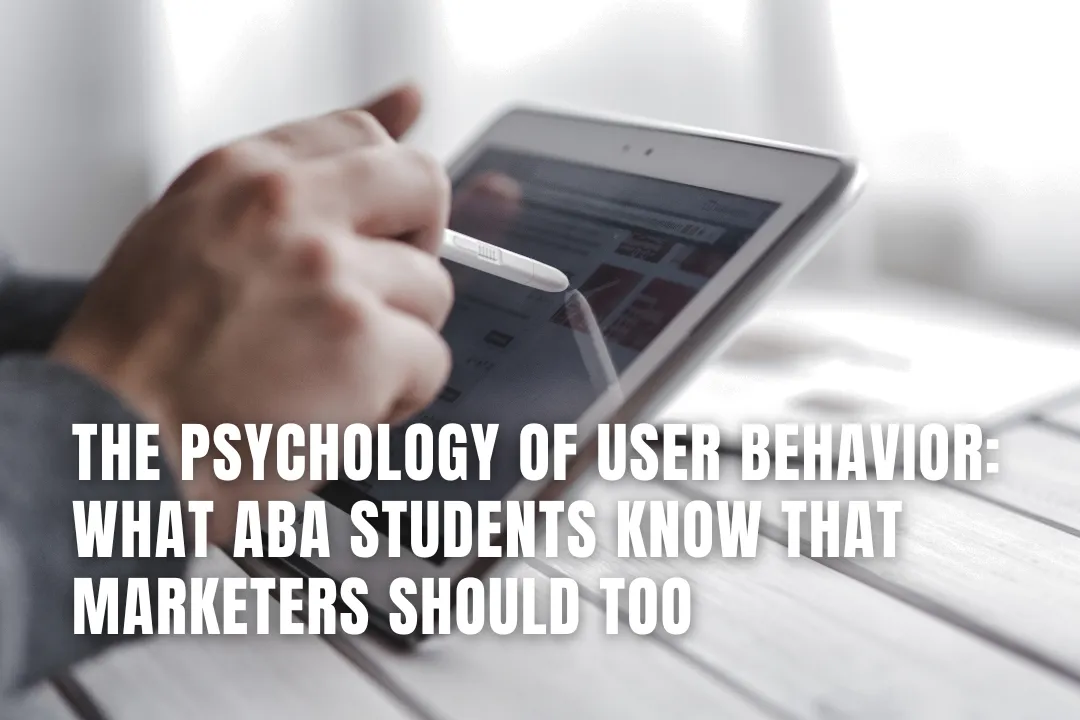
Marketing doesn’t always need a flashy ad campaign or the latest growth-hack trick to work. Sometimes, it just needs a better understanding of human behavior. And for that, marketers could learn a lot from an unexpected place: the coursework of Applied Behavior Analysis (ABA) students.
ABA students, many of whom are training to work with people on the autism spectrum or in clinical settings, study patterns of behavior with scientific precision. They’re not guessing what motivates action they’re measuring it, reinforcing it, and shaping it over time. Sound familiar? It should. Because that’s exactly what good marketing does, too.
It’s no surprise, then, that some marketing pros are turning to behavioral psychology for sharper insights. If you’ve ever peeked at the BCBA exam materials (that’s the Board Certified Behavior Analyst credential), you’ll notice something striking. Concepts like reinforcement, extinction, and shaping? They might as well be renamed “customer retention,” “email unsubscribes,” and “UX testing.”
Let’s break down some of the best behavior-based insights that ABA students know, and how marketers can use them without going back to grad school.

At the heart of ABA is reinforcement doing more of what works. Positive reinforcement increases the chances of a behavior repeating by adding something the user wants. Marketers do this all the time. Think discount codes, loyalty rewards, email thank-you’s, or a dopamine-loaded "congratulations" screen after checkout.
What ABA teaches is how to use reinforcement with intention. Timing, frequency, and context all matter. A reward that comes too late or too often loses its impact. This is why an onboarding email with a well-timed “You just hit 100 points!” feels satisfying, but a notification every single action? That gets annoying.
Pro Tip: Instead of overloading users with instant gratification, try variable reinforcement, where the reward shows up intermittently. It's the same principle that makes slot machines addictive, but marketers can use it more ethically (like unexpected discounts or surprise features).
Most users don’t jump straight from “just browsing” to “buy now.” Instead, they move through micro-behavior watching a product video, reading reviews, signing up for a newsletter. ABA calls this shaping: reinforcing small steps that lead to the bigger behavior you want.
Marketers who understand shaping don’t treat abandoned carts as failures they treat them as part of the learning curve. They build smart retargeting flows, deliver content that fits the user's readiness level, and adjust expectations along the way.
If you only reward the final purchase, you’re missing the opportunity to shape user behavior before that point. Thank them for signing up. Celebrate their first product view. Reward interaction, not just transaction.
Here’s something ABA students know that marketers often forget: if a behavior stops being reinforced, it fades. That’s called extinction. For example, if users used to get value from your weekly newsletter but now it’s just fluff, their engagement quietly dies. No dramatic exits. Just indifference.
This is why content marketing has to stay fresh, why app updates need actual improvements, and why retention metrics matter more than vanity clicks. If users feel their action no longer results in something worthwhile, they stop acting.
Quick fix: Go back and audit your existing touchpoints. Are users still getting value from that email series you wrote two years ago? Has your “loyalty” program actually rewarded anyone lately?
Sometimes, people know what to do but need a little push. ABA calls this prompting reminders, cues, or guidance to help someone complete an action. In marketing, these are everywhere: tooltips, onboarding checklists, progress bars, limited-time banners.
Prompts work best when they reduce friction without overwhelming. Too much prompting and you get banner blindness. Too little and users drop off. ABA teaches how to fade prompts over time, so the behavior sticks even without the nudge. For example, you might guide new users through a product tour once, then let them explore freely.
Marketers can learn from this: don’t just build prompts, build fading prompts. Show users how, then let them shine.
ABA doesn’t just aim for behavior change in one context, it aims for generalization. That means a skill learned in therapy shows up at school, at home, and beyond. Marketers should aim for the same: if a customer had a good experience on your mobile site, will they also convert on desktop? If someone loved one product, are they likely to trust you with another?
Too often, user behavior gets trapped in silos. You build an amazing checkout flow on mobile but forget to optimize it on desktop. You celebrate email opens but ignore post-click behavior.
A behavioral lens reminds you: behavior needs to transfer to matter.
Just like in clinical settings, users avoid what they find frustrating, punishing, or unrewarding. A confusing interface? That’s punishment. A support ticket with no reply? Also punishment. Even something subtle, like a tiny font or unclear CTA, can become a deterrent over time.
ABA students are trained to spot and reduce avoidance behavior by changing the environment or making the task more reinforcing. Marketers can use this insight to rethink poor UX decisions or clunky forms. People don’t always leave feedback when they’re frustrated they just disappear.
Takeaway: Ghosting isn't random. It’s often a behavior shaped by your system.
Here’s where ABA takes a more nuanced view than most marketing books. It understands that behavior isn’t just about external rewards. It’s also shaped by internal motivation what ABA calls “motivating operations.” Hunger, boredom, urgency, even time of day these all affect how likely someone is to act.
This helps explain why the same CTA might convert at 8 PM but flop at 10 AM. Or why urgency works better when paired with scarcity ("Only 3 left in stock!") rather than just a countdown.
Marketing often gets lazy with urgency, repeating the same tropes over and over. But ABA shows that the real magic comes from understanding what your user actually wants right now.
If you’ve ever wondered why users bounce after two minutes, ABA has a method for that: functional analysis. It’s the practice of isolating and testing variables to understand what drives behavior.
Marketers often A/B test headlines or colors, but behavior analysts take it further. They track antecedents (what happens before), behaviors (what actually happens), and consequences (what happens after). Sound familiar? That’s basically a behavioral funnel.
Example: If users bounce after seeing your pricing page, what was the antecedent? A vague value proposition? An ad that overpromised? Then fix that. Don’t just guess.
In a post-cookie world, marketers can’t rely solely on retargeting or behavioral tracking to convert users. You have to earn behavior change with value, clarity, and reinforcement. ABA gives you a roadmap to do exactly that.
Behavior analysts spend years learning how to shape behavior ethically and effectively. Marketers should at least borrow a few chapters from that playbook. Because understanding behavior isn’t just useful, it’s the difference between a campaign that clicks and one that converts.

You don’t have to enroll in a behavior analysis program to start applying these principles. Just think like an analyst: observe, test, reinforce, repeat.
At the end of the day, both ABA students and marketers want the same thing, to influence human behavior in a meaningful, sustainable way. One group does it to help individuals thrive. The other to build better businesses.
But when they meet in the middle? That’s where the real behavioral magic happens.